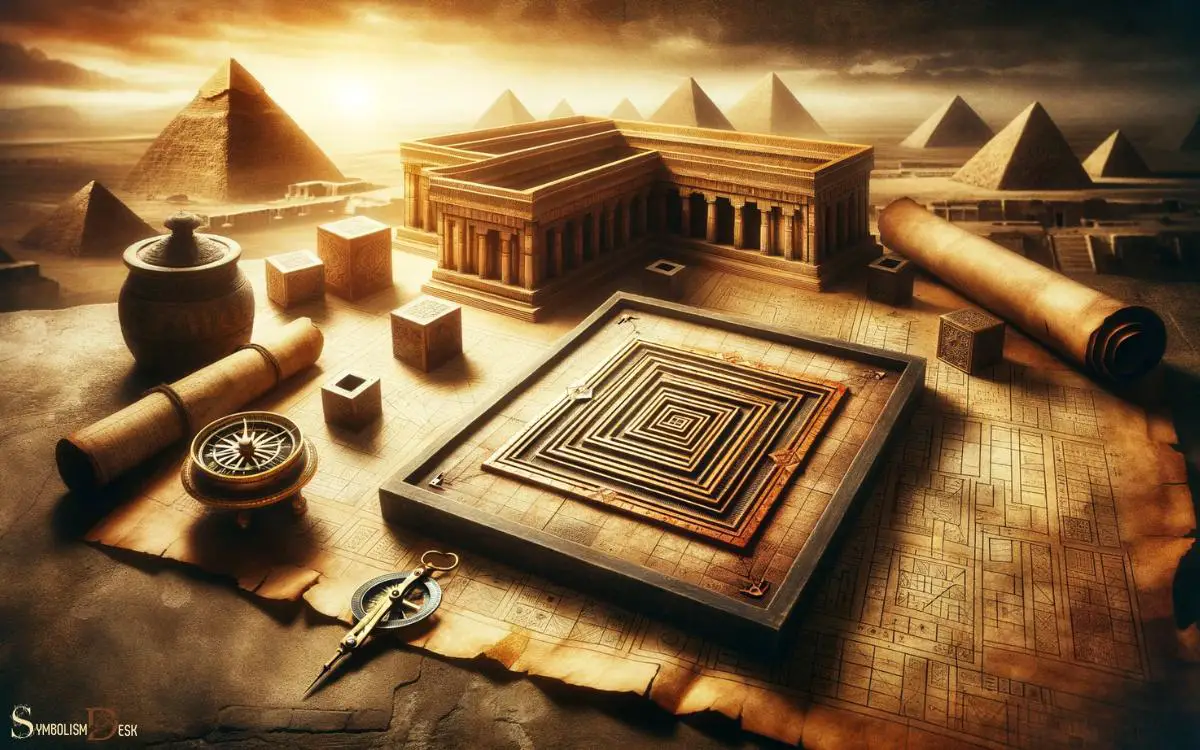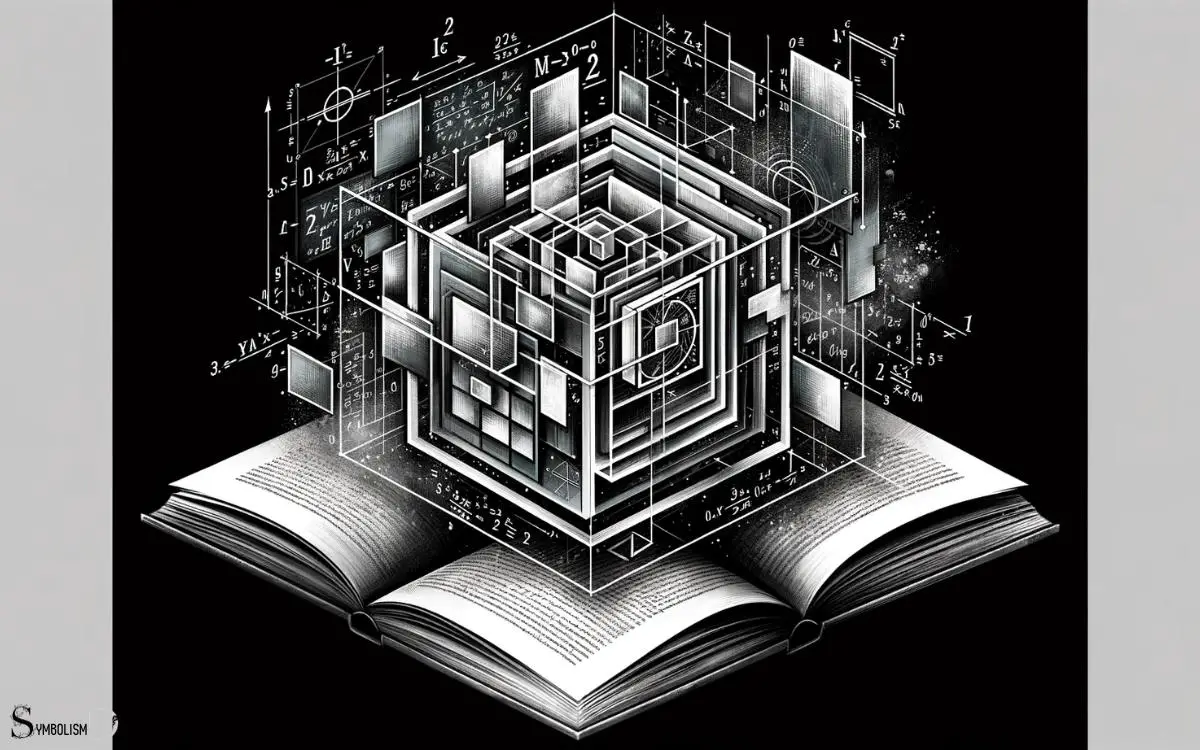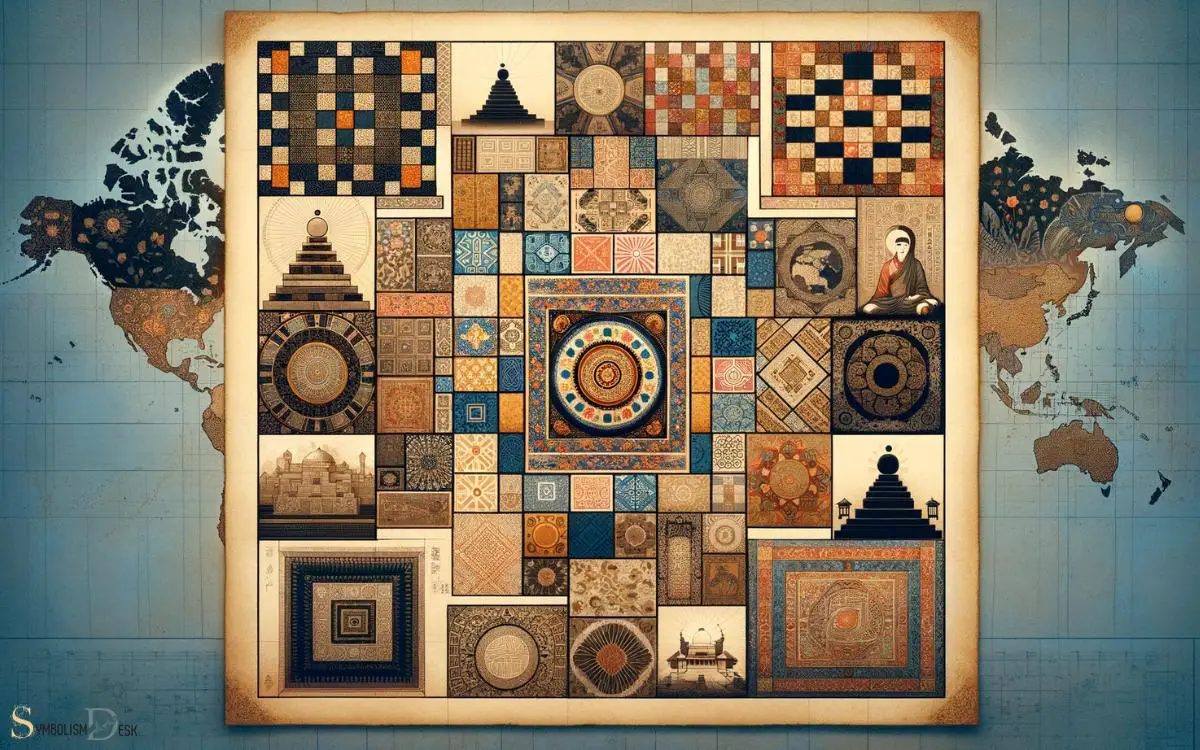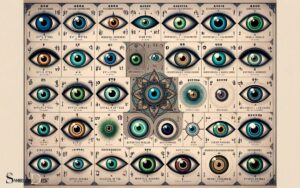What Is the Symbolic Meaning of a Square? Stability!
The symbolic meaning of a square encompasses concepts of stability, balance, and order across various cultures. It often represents the four cardinal points, the four seasons, and the natural elements of earth, air, fire, and water.
The square’s equal sides symbolize equality and structure, making it a foundational shape in art and architecture.
The square is a potent symbol that carries significant weight in many cultural, spiritual, and philosophical contexts:
- Stability and Balance: The equal lengths of the square’s sides convey steadiness and reliability.
- Four Elements: Many traditions associate the square with the quartet of earth, air, fire, and water.
- Cardinal Directions: The square can represent north, south, east, and west.
- Seasons: The four sides also correspond with spring, summer, autumn, and winter.
- Human Life: In some beliefs, the square signifies stages of human life: birth, growth, maturity, and death.
| Cultural Context | Symbolic Meaning |
|---|---|
| Ancient Egypt | Earth and materiality |
| Chinese Philosophy | Balance and order |
| Christian Symbolism | The earth and the material world |
Embodying a sense of permanence, the square is a universal symbol of groundedness and foundational structure.

Key Takeaway
10 Symbolic Meanings of a Square
| Symbolic Meaning | Description |
|---|---|
| Stability | Represents a solid and unchanging foundation. |
| Balance | Signifies equilibrium and harmony. |
| Perfection | Represents the ideal of completeness and flawlessness. |
| Order | Symbolizes organization and structure. |
| Fairness | Reflects principles of justice and equality. |
| Elemental | Represents the earth element in various belief systems. |
| Architectural | A fundamental shape used in building design and construction. |
| Mathematical | Fundamental in geometry, with precise properties and formulas. |
| Artistic | Often used for symmetry and aesthetic balance in art. |
| Spiritual | Carries significance in various religious and spiritual practices. |
Historical Symbolism of the Square

The historical symbolism of the square dates back to ancient civilizations. It was often associated with stability and balance. In ancient Egypt, the square was linked to the concept of the physical world and the four cardinal points.
This represented a sense of grounding and stability. In ancient Chinese philosophy, the square was associated with the Earth. It was seen as a symbol of balance and harmony. Similarly, in ancient Greek and Roman architecture, the square was used as a foundational element.
It represented strength and stability in the construction of buildings and public spaces. The consistent association of the square with stability and balance across different ancient civilizations highlights its enduring symbolic significance throughout history.
Cultural Significance Across Civilizations

Throughout history, cultures across civilizations have attributed significant cultural importance to the symbolism of the square, emphasizing its representation of stability and balance.
In ancient Egyptian culture:
The square was associated with the earth and its four cardinal points, symbolizing order and stability in their understanding of the world. The use of squares in the construction of pyramids and temples further reinforced its significance as a symbol of permanence and harmony.
In Chinese culture:
The square, particularly the concept of a square within a circle, represented the earth and the heavens, reflecting the idea of a harmonious and balanced universe.
The use of the square motif in traditional Chinese architecture and urban planning signified stability, balance, and the order of the cosmos.
Spiritual and Philosophical Interpretations
Spiritual and philosophical interpretations of the square delve into its representation of order and balance, connecting its symbolism to broader concepts of harmony and cosmic alignment.
In spiritual traditions, the square is often associated with the four elements—earth, air, fire, and water—and the idea of grounding and stability.
Philosophically, the square embodies the notion of rationality, logic, and the pursuit of truth, reflecting the human desire for structure and understanding in the world.
It’s also linked to the concept of perfection and completeness, as all four sides are equal, representing a harmonious and balanced whole.
Furthermore, in esoteric and mystical teachings, the square is seen as a symbol of protection and a foundation for spiritual growth, encouraging individuals to seek equilibrium and alignment within themselves and the universe.
Symbolism in Art and Architecture
Art and architecture often utilize the symbolic meaning of a square to convey stability and balance. By incorporating squares into their designs, artists and architects evoke a sense of solidity and equilibrium, creating a visual representation of these abstract concepts.
Understanding the significance of squares in art and architecture can deepen one’s appreciation for the underlying symbolism in various structures and artistic compositions.
Square as Stability
In art and architecture, the square symbolizes stability due to its balanced and unyielding nature. This shape exudes a sense of reliability and strength, making it a common choice in various artistic and architectural expressions.
When used in structures, the square provides a sturdy foundation and a sense of security. In art, it represents the stability and permanence of certain elements within a composition.
To illustrate this, consider the following:
- Architectural Design: The use of squares in the design of buildings and structures conveys a feeling of solidity and dependability. Squares are often employed in the construction of pillars and columns, emphasizing their robust and enduring nature.
These examples highlight how the square is utilized to convey stability in both art and architecture.
Such symbolism adds depth and meaning to the visual and structural elements in these creative fields, setting the stage for further exploration of the square’s significance as a symbol of balance.
Square as Balance
The square represents a sense of equilibrium and harmony in both artistic compositions and architectural structures.
In art, the use of a square can create a feeling of stability and balance, providing a visual centering point for the viewer.
This balance can evoke a sense of calm and order, making the square a powerful symbol in art. Similarly, in architecture, the square is often used to create a sense of stability and balance.
The symmetrical nature of the square provides a feeling of solidity and reliability in architectural design, making it a popular choice for creating buildings and structures that convey a sense of equilibrium.
Practical and Everyday Symbolic Representations

The symbolic meaning of a square extends beyond art and architecture to practical and everyday representations.
The square is often seen as a symbol of stability and balance, reflecting its use in various contexts such as construction, design, and organization. Understanding mathematical symbolic representation is key in utilizing the square’s attributes in various fields. For example, in geometry, the square’s four equal sides and right angles make it a fundamental shape for calculating area and perimeter. In algebra, the square’s mathematical representation as x^2 helps solve for unknown variables and understand patterns in equations. Overall, the square’s symbolic representation in mathematics is crucial for its practical applications in real-world situations.
Understanding the practical and everyday symbolic representations of a square can shed light on its significance in different aspects of life.
Square as Stability
Square represents a fundamental symbol of stability in various practical and everyday contexts.
In architecture and construction: Buildings often have square foundations, providing stability and strength. This shape helps distribute the weight of the structure evenly, preventing leaning or collapse. It also facilitates the creation of functional, stable rooms and living spaces.
In furniture and design: Many tables, shelves, and cabinets have a square shape, offering stability and balance in their functionality and appearance.
The square design allows for equal weight distribution and prevents tipping or wobbling. It also conveys a sense of reliability and solidity in the overall aesthetic.
Transitioning to the subsequent section about ‘square as balance’, the stability represented by a square often intertwines with the concept of balance.
Square as Balance
A square shape represents balance in various practical and everyday symbolic contexts, providing stability and symmetry.
In practical applications, the square’s equal sides and right angles make it a representation of stability and balance.
In everyday symbolic representations, the square is often used to convey a sense of fairness, equality, and order. The table below illustrates the everyday symbolic representations of a square as balance.
| Everyday Symbolic Representations | Meaning |
|---|---|
| Justice | Fairness and Equality |
| Architecture | Stability and Symmetry |
| Urban Planning | Order and Organization |
| Balance Symbol | Equilibrium and Harmony |
| Chessboard | Strategy and Calculation |
Understanding the practical and everyday symbolic representations of a square as balance helps to appreciate its significance in various contexts.
Does the Symbolic Meaning of Stones and Squares Both Represent Stability?
The symbolic meaning of stones and squares both represent stability in different ways. Stones are often seen as solid and enduring, representing strength and permanence. Squares, on the other hand, symbolize balance, equality, and stability in their even and uniform shape. Both hold significant meanings of stability.
Modern Interpretations and Contemporary Usage

Modern interpreters and contemporary users often associate the square with stability, equality, and balance in various contexts.
In modern architecture, squares are used to create buildings with a sense of stability and strength.
In urban planning, city squares are designed as communal spaces that promote equality and inclusivity.
Additionally, the use of the square as a symbol for balance is evident in contemporary graphic design, where it’s employed to convey a sense of equilibrium and harmony in visual compositions.
Furthermore, in social movements, the square has become a symbol of fairness and equal rights, representing the need for balance and justice in society.
Conclusion
The symbolic meaning of a square has been deeply ingrained in human history, culture, spirituality, and art. Its significance as a representation of stability, balance, and order has been embraced across civilizations and continues to be interpreted in modern contexts.
The square’s enduring symbolism serves as a reminder of the enduring nature of its meaning and the ways in which it continues to resonate with people today.






